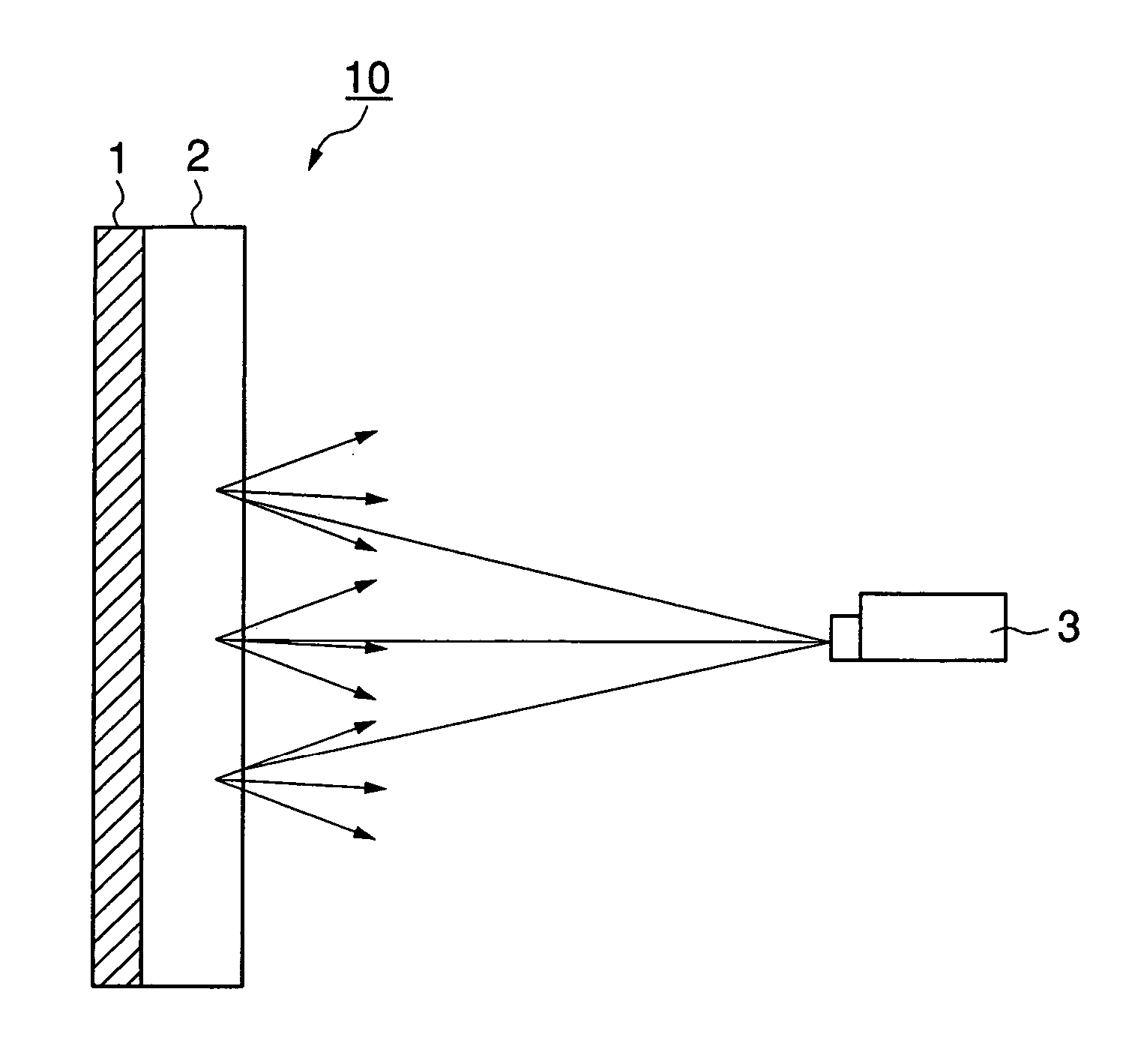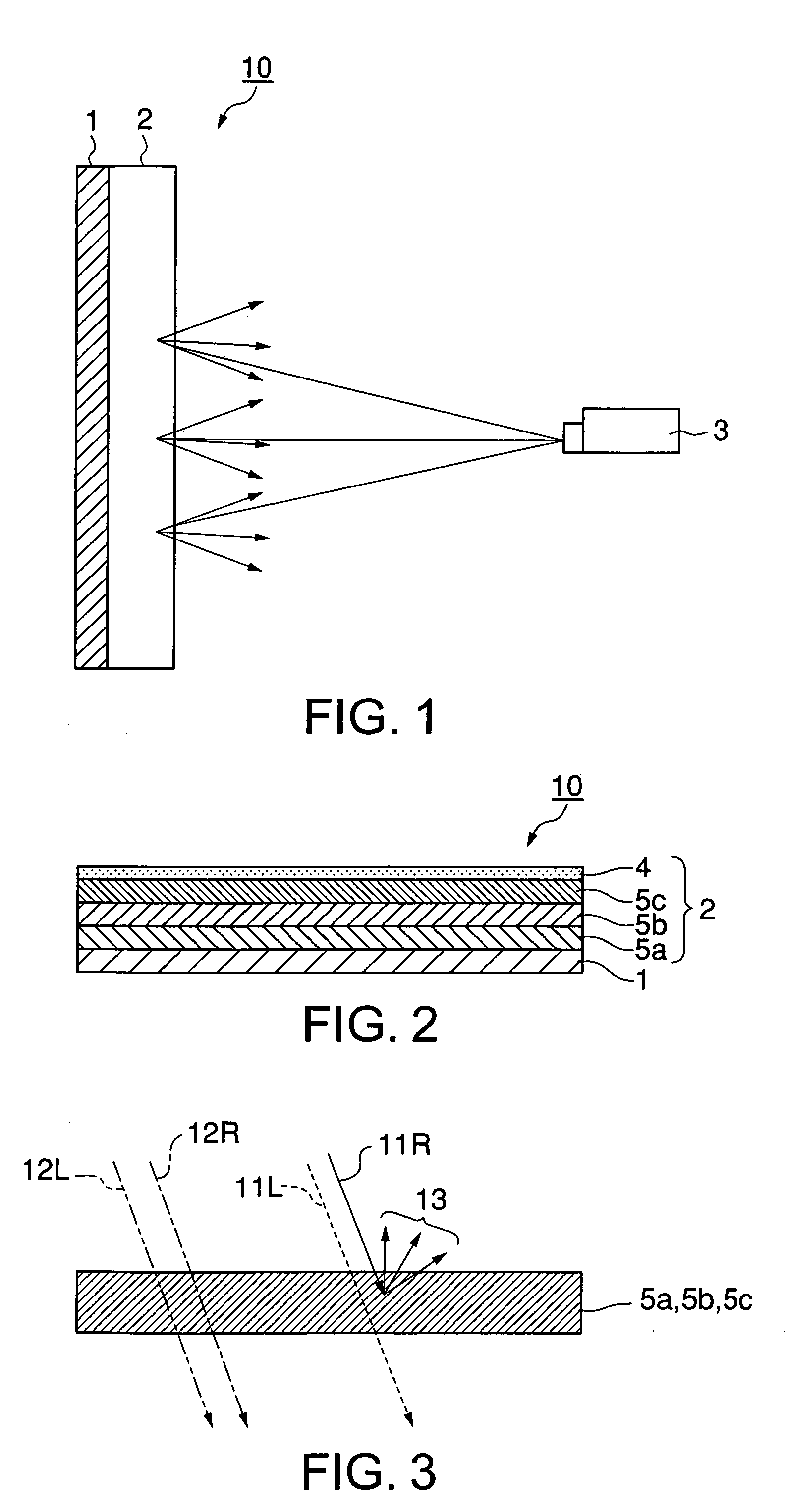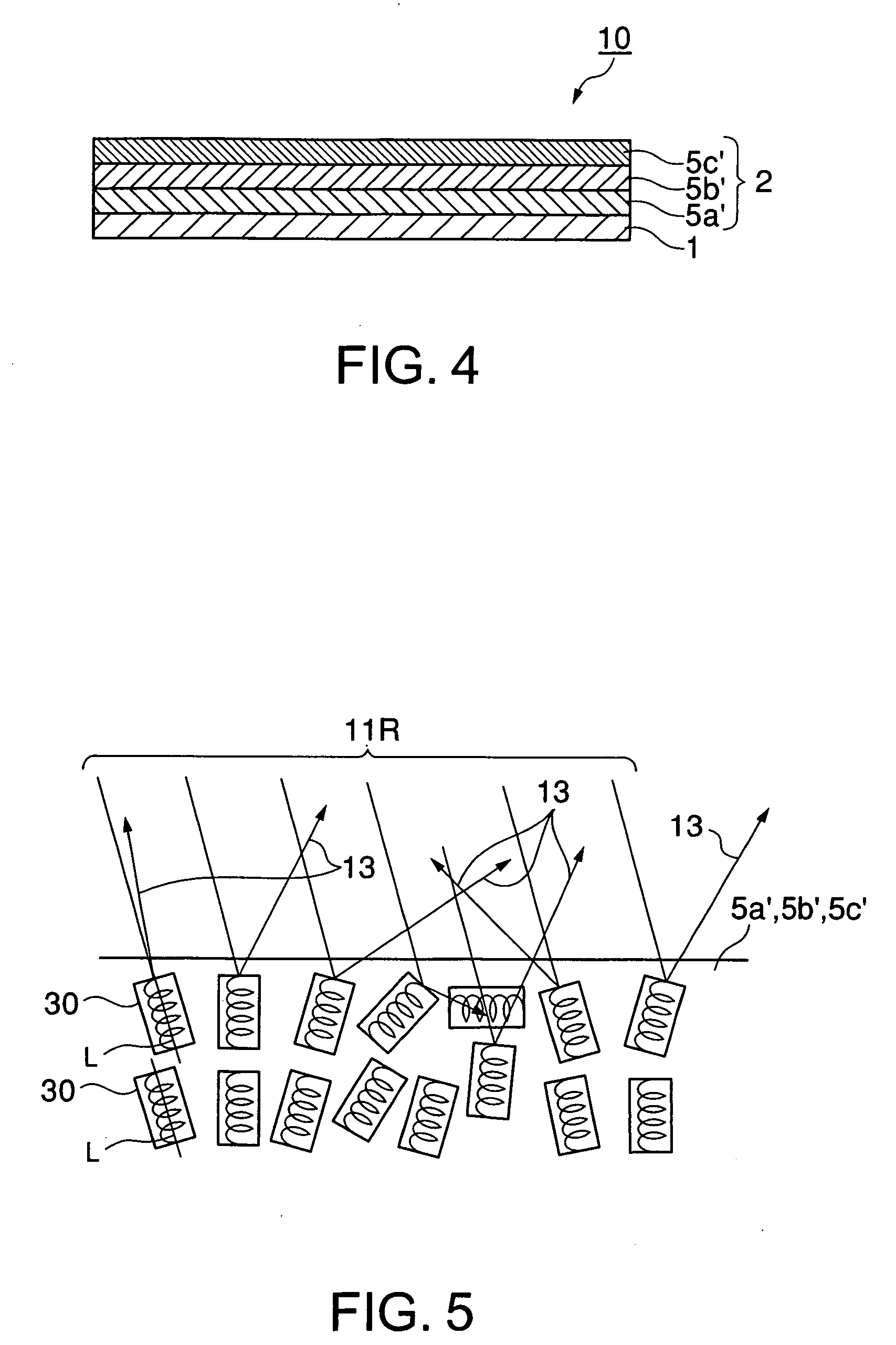Projection screen and projection system comprising the same
a projection screen and projection system technology, applied in the field of projection systems, can solve the problems of difficult for such a conventional projection screen to show good image display performance, difficult for the conventional projection screen to provide good image display, and small differences in brightness between white and black, so as to achieve double-enhanced image contrast, excellent color display, and low brightness of the dark-indication part
- Summary
- Abstract
- Description
- Claims
- Application Information
AI Technical Summary
Benefits of technology
Problems solved by technology
Method used
Image
Examples
first embodiment
(1) First Embodiment
[0056] The first embodiment of the projected-image-receiving layer 2 will be firstly described. As described above, this embodiment is that the projected-image-receiving layer 2 includes, in addition to the two or more selective reflection layers having the function of selectively reflecting a specific polarized-light component, a diffusing layer having the function of diffusing the specific polarized-light component. Namely, in the projected-image-receiving layer 2 according to the first embodiment, the selective reflection layers act only to reflect a specific polarized-light component, while the diffusing layer diffuses the specific polarized-light component.
[0057] For example, the projected-image-receiving layer 2 according to the first embodiment includes, as shown in FIG. 2, a plurality of selective reflection layers 5a, 5b and 5c and a diffusing layer 4 formed on these selective reflection layers 5a, 5b and 5c. Of these selective reflection layers 5a, 5b ...
second embodiment
(2) Second Embodiment
[0079] The second embodiment of the projected-image-receiving layer 2 will be described below. As mentioned above, the second embodiment of the projected-image-receiving layer 2 is that each selective reflection layer constituting the projected-image-receiving layer 2 has both the function of selectively reflecting a specific polarized-light component and the function of diffusing the specific polarized-light component.
[0080] Such a projected-image-receiving layer 2 according to the second embodiment includes a laminate of a plurality of selective reflection layers 5a′, 5b′ and 5c′ having both the function of selectively reflecting a specific polarized-light component and the function of diffusing the specific polarized-light component, as shown in FIG. 4, for example. In this case, the selective reflection layer 5a′ having a reflection wave range covering the shortest wavelength side is provided on the substrate 1, the selective reflection layer5b′ having a re...
examples
[0149] A specific example of the above-described embodiments will now be given below.
PUM
 Login to View More
Login to View More Abstract
Description
Claims
Application Information
 Login to View More
Login to View More - R&D
- Intellectual Property
- Life Sciences
- Materials
- Tech Scout
- Unparalleled Data Quality
- Higher Quality Content
- 60% Fewer Hallucinations
Browse by: Latest US Patents, China's latest patents, Technical Efficacy Thesaurus, Application Domain, Technology Topic, Popular Technical Reports.
© 2025 PatSnap. All rights reserved.Legal|Privacy policy|Modern Slavery Act Transparency Statement|Sitemap|About US| Contact US: help@patsnap.com



